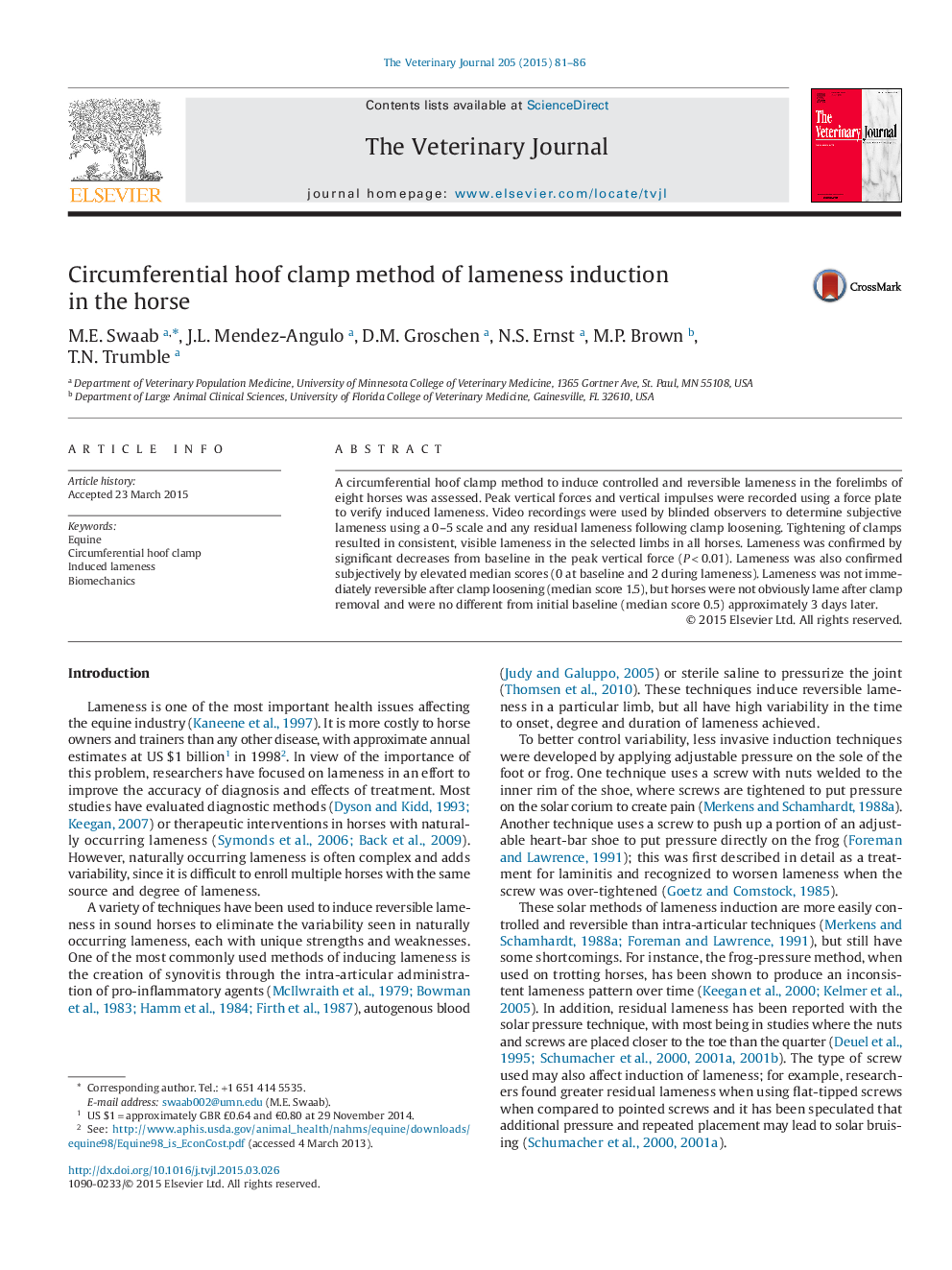| Article ID | Journal | Published Year | Pages | File Type |
|---|---|---|---|---|
| 5797409 | The Veterinary Journal | 2015 | 6 Pages |
â¢A novel method of inducing lameness in the horse using a circumferential clamp around the hoof is described.â¢Clamp tightening caused increased objective and subjective measures of lameness.â¢Lameness was easily controlled and reversible, with return to baseline in ~3 days.â¢The technique is adaptable for multiple uses, i.e. multi-limb lameness, repeat induction and compensation.
A circumferential hoof clamp method to induce controlled and reversible lameness in the forelimbs of eight horses was assessed. Peak vertical forces and vertical impulses were recorded using a force plate to verify induced lameness. Video recordings were used by blinded observers to determine subjective lameness using a 0-5 scale and any residual lameness following clamp loosening. Tightening of clamps resulted in consistent, visible lameness in the selected limbs in all horses. Lameness was confirmed by significant decreases from baseline in the peak vertical force (Pâ<0.01). Lameness was also confirmed subjectively by elevated median scores (0 at baseline and 2 during lameness). Lameness was not immediately reversible after clamp loosening (median score 1.5), but horses were not obviously lame after clamp removal and were no different from initial baseline (median score 0.5) approximately 3 days later.
